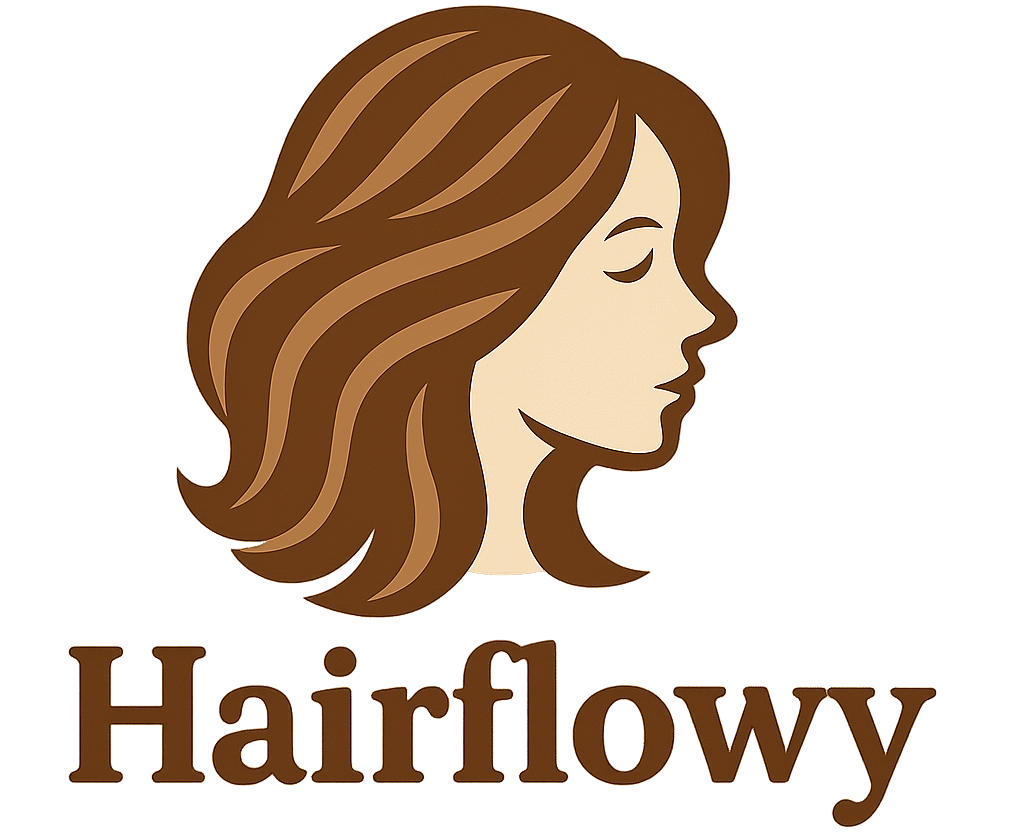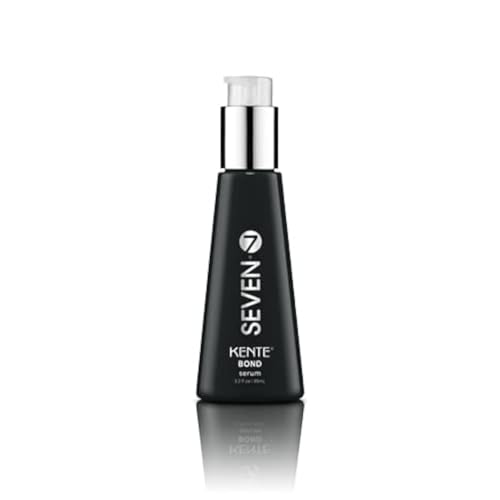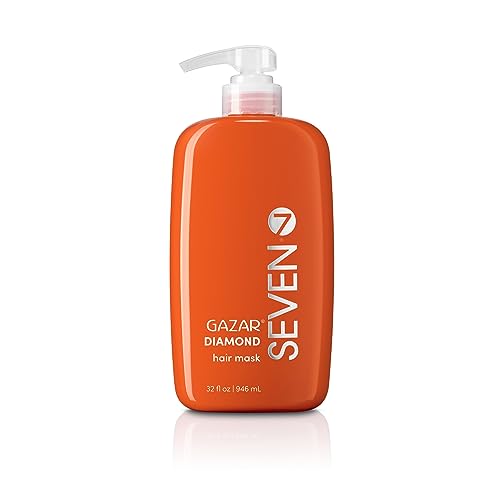We’ve all been there – staring at our reflection while dealing with brittle strands that seem impossible to style. Whether it’s from excessive heat styling, chemical treatments, or environmental damage, compromised hair doesn’t have to limit your styling options.
The key lies in choosing protective hairstyles that work with your hair’s current condition rather than against it. Smart styling techniques can actually help your damaged locks look healthier while giving them time to recover and regenerate.
We’ll explore versatile hairstyles that minimize further damage while maximizing your hair’s natural beauty. From elegant updos that tuck away fragile ends to strategic cuts that eliminate the most damaged sections, these styling answers prove that healthy-looking hair is achievable regardless of your starting point.
Protective Styles That Shield Your Strands From Further Damage
Protective hairstyles create a barrier between your damaged hair and environmental stressors while reducing manipulation that can worsen existing breakage. These gentle styling options keep fragile strands tucked away safely while promoting healing.
Low Buns and Chignons
Low buns position your hair at the nape of your neck, creating minimal tension on damaged roots and mid lengths. We recommend securing these styles with silk scrunchies or soft fabric ties rather than tight elastics that can snap weakened strands. Classic chignons work particularly well for damaged hair because they require minimal brushing and can hide split ends effectively.
Twisted low buns offer extra protection by wrapping hair strands around themselves before securing. This technique distributes weight evenly and prevents concentration of stress on any single area. French twists and side swept chignons provide elegant alternatives that keep damaged ends completely concealed from view.
Pin placement becomes crucial when creating these protective updos on fragile hair. We suggest using bobby pins with smooth coating and inserting them gently to avoid snagging. Space pins evenly around the bun to distribute holding power rather than clustering them in one spot.
Loose Braids and Plaits
Loose braids reduce tension on your hair shaft while keeping strands organized and protected throughout the day. We emphasize keeping these braids deliberately loose to prevent pulling on weakened roots and creating additional breakage points. Dutch braids and French braids work well when executed with gentle pressure.
Three strand braids offer the simplest protective option for damaged hair maintenance. Start these braids below ear level to minimize stress on the most fragile crown area. Fishtail braids provide visual interest while distributing tension across multiple small sections rather than large chunks of hair.
Overnight braiding protects your hair from friction against pillowcases and reduces morning tangles. We recommend braiding slightly damp hair with leave in conditioner to maximize moisture retention. Single loose braids down the back work better than multiple smaller braids that require more manipulation.
Silk Scarf Wraps
Silk scarf wraps eliminate friction entirely by creating a smooth barrier between your damaged hair and external surfaces. We prefer 100% mulberry silk scarves because they maintain moisture balance and prevent static buildup that can worsen breakage. These wraps work especially well for protecting chemically damaged or heat processed hair.
Head wrapping techniques vary depending on your hair length and damage severity. Pin curl method involves loosely curling sections and wrapping the entire head with silk fabric. Turban style wraps work well for shorter damaged hair while maintaining an elegant appearance throughout the day.
Silk pillowcases complement scarf wrapping by extending protection through sleep hours. This combination reduces mechanical damage from tossing and turning while maintaining the moisture levels your damaged strands need for recovery. We recommend changing silk accessories weekly to maintain cleanliness and effectiveness.
Low-Maintenance Cuts That Minimize Heat and Styling Stress
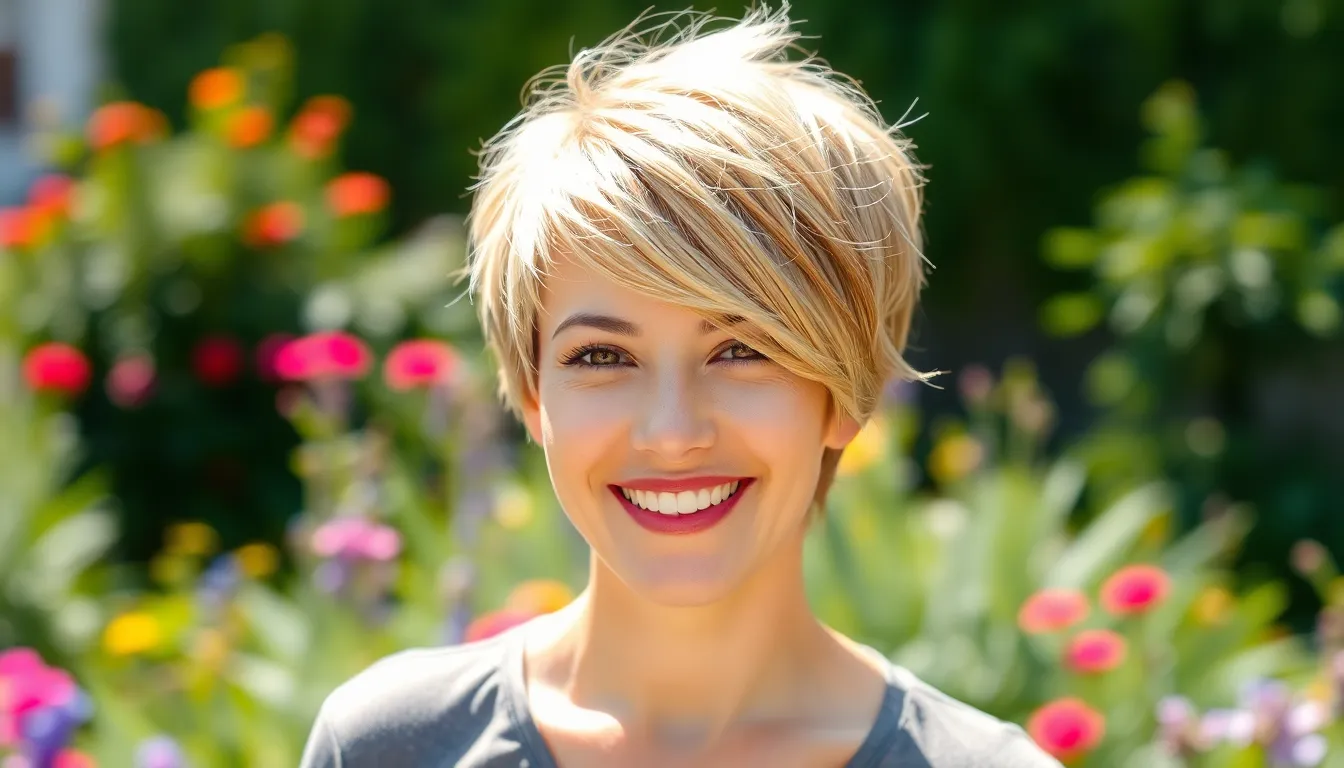
Transitioning from protective styling methods to strategic cuts offers another powerful approach for managing damaged hair. Smart cutting techniques can eliminate the most compromised sections while creating shapes that require minimal daily manipulation.
The Classic Bob
Classic bobs provide straightforward styling that reduces heat dependency and daily manipulation stress. We recommend this timeless cut because it eliminates the need for excessive styling tools and complicated routines. The blunt edge creates a clean finish that looks polished even when air dried, making it perfect for damaged hair that can’t withstand frequent heat exposure.
Length typically falls between the chin and shoulders, offering versatility without requiring daily curling or straightening. Stylists often suggest this cut for clients with heat damage because the shorter length removes the most compromised ends. Natural texture becomes an asset rather than something to fight against, allowing your hair’s inherent movement to create the style.
Layered Pixie Cut
Layered pixie cuts dramatically reduce styling time while minimizing heat usage throughout your daily routine. We find this approach particularly effective for severely damaged hair because it removes the most compromised sections entirely. The multiple layers create natural volume and movement without requiring hot tools or extensive manipulation.
Maintenance becomes remarkably simple with regular trims every 4-6 weeks to maintain the shape. Air drying works beautifully with this style, eliminating the need for blow dryers or heat styling tools. The shorter length also means less weight pulling on damaged follicles, reducing further stress on your scalp and remaining healthy strands.
Shoulder-Length Lob
Shoulder length lobs offer maximum versatility with minimal heat requirements for daily styling. We consider this the perfect compromise between keeping length and reducing damage because it removes compromised ends while maintaining styling options. The longer bob length allows for various looks using simple techniques like braiding, twisting, or gentle scrunching.
Styling becomes effortless with this cut since the length works beautifully with natural textures and air drying methods. Many clients find they can achieve professional looking results using only leave in treatments and gentle finger styling. The versatile length transitions seamlessly from day to night looks without requiring hot tools or extensive manipulation that could worsen existing damage.
Gentle Updos That Keep Hair Tucked Away Safely

Gentle updos provide the perfect solution for damaged hair by keeping vulnerable strands secured and protected from daily wear. These styles minimize manipulation while creating elegant looks that conceal damage and prevent further breakage.
Messy Top Knots
Messy buns offer a relaxed styling approach that doesn’t require tight pulling, making them ideal for fragile strands. This loose interpretation of traditional buns keeps hair elevated without creating tension at the scalp or hairline. We recommend gathering hair loosely at the crown and securing with a silk scrunchie to prevent additional stress on weakened strands.
Positioning matters significantly when creating protective messy knots for damaged hair. Place the bun higher on your head to keep ends completely tucked away from clothing friction and environmental exposure. The intentionally undone appearance actually works in your favor by reducing the need for excessive brushing and tight securing methods that can worsen existing damage.
Twisted Side Updos
Twisted side braids involve gently redirecting hair to one side and securing it with minimal manipulation. This low maintenance style distributes weight evenly across the scalp while keeping damaged ends safely contained. We suggest starting with slightly damp hair to make the twisting process smoother and less likely to cause breakage.
Creating twisted side updos requires a gentle touch that prioritizes hair health over perfection. Begin by loosely gathering sections from one temple and twist them back toward the opposite ear, securing with bobby pins every few inches. The key lies in maintaining loose tension throughout the process, allowing the hair to rest comfortably without strain.
French Twist Variations
French twists represent one of the most protective classic styles available for damaged hair. This chic updo tucks hair ends completely away while creating an elegant silhouette that works for both casual and formal occasions. We recommend using a wide tooth comb to smooth hair gently before beginning the twist to minimize breakage during styling.
Modified French twists add visual interest without increasing tension on vulnerable strands. Consider incorporating a small side braid before creating the main twist, or leave some face framing pieces loose for a softer appearance. These variations maintain the protective benefits of the original style while offering more styling flexibility for different hair textures and damage levels.
No-Heat Styling Methods for Damaged Hair Recovery
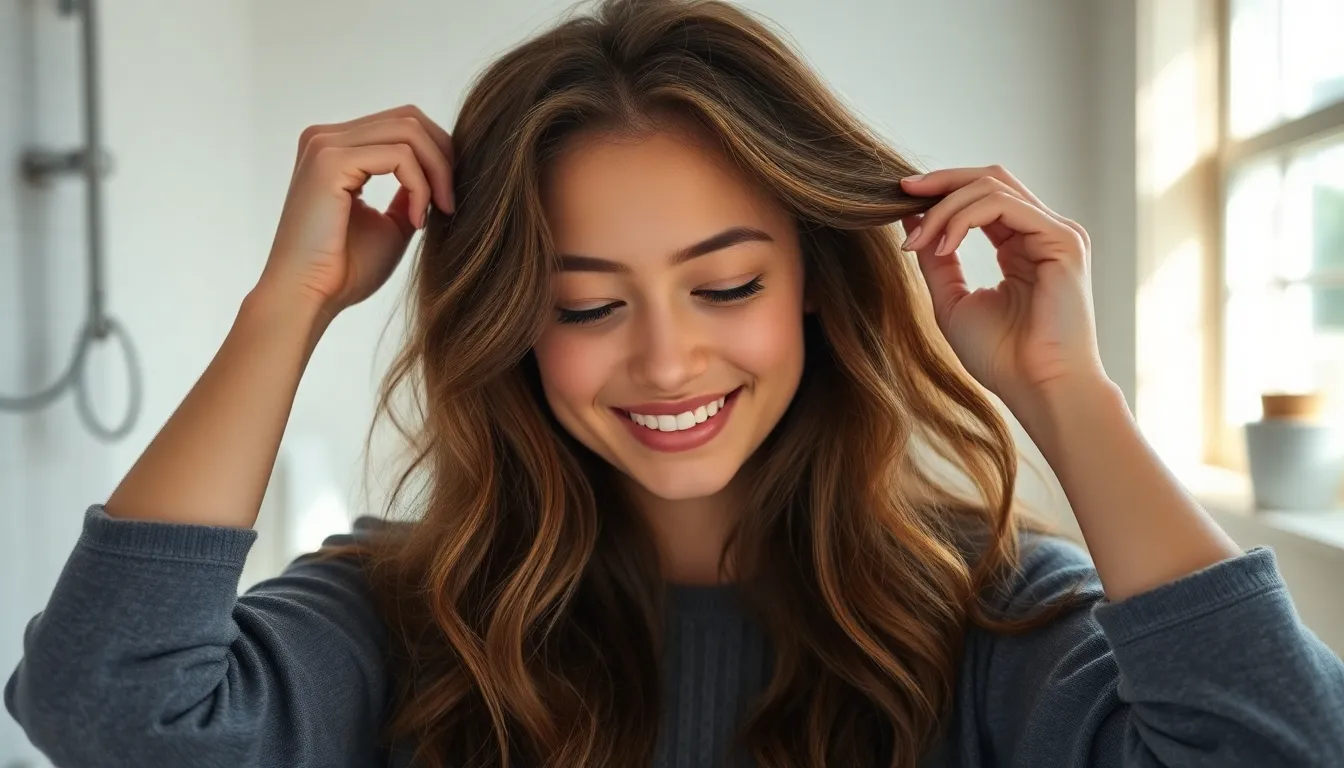
We’ll explore gentle styling techniques that promote healing while creating beautiful textures without exposing fragile strands to damaging heat.
Air-Dry Waves With Scrunching
Air drying with scrunching creates natural looking waves while preserving your hair’s moisture balance. Towel dry your hair gently after washing, then use your fingers to scrunch sections upward from ends to roots. This method enhances your hair’s natural texture and reduces frizz by allowing strands to dry in their preferred pattern.
Benefits include reduced heat damage and preserved moisture retention, which are essential for damaged hair recovery. The scrunching motion encourages wave formation without harsh manipulation that could cause additional breakage. We recommend using a microfiber towel or cotton t-shirt to minimize friction during the initial drying process.
Overnight Braided Textures
Braiding damp hair before bed creates textured waves while protecting strands from friction during sleep. Start with slightly damp hair and create one or multiple loose braids depending on your desired texture intensity. The overnight setting time allows hair to mold into gentle waves without any heat exposure.
This technique minimizes handling throughout the styling process, reducing opportunities for breakage in vulnerable areas. Multiple smaller braids create tighter textures, while single braids produce looser waves that work well for most hair types. Release the braids carefully in the morning and gently separate sections with your fingers for added volume.
Pin Curl Sets
Pin curls achieve defined curls without heat while promoting smooth, shiny finishes that damaged hair often lacks. Roll small sections of damp hair into tight spirals and secure each one with bobby pins close to your scalp. Allow the curls to set for several hours or overnight before carefully removing the pins.
This method creates curls that last longer than heat styled versions because the hair has time to fully conform to the new shape. Pin curls work particularly well on shoulder length hair and shorter styles, where the weight won’t pull out the curl pattern. We suggest starting with quarter sized sections for even curl distribution and consistent results throughout your style.
Strategic Layering Techniques to Disguise Breakage and Thinning

Strategic layering transforms damaged hair by redistributing visual weight and creating movement that masks problematic areas. These cutting techniques work specifically to camouflage breakage while maintaining hair health and reducing styling stress.
Face-Framing Layers
Face-framing layers draw attention away from damaged ends by creating a more balanced look that highlights facial features. We recommend these layers for their ability to redirect focus from thinning areas to the most flattering parts of your face. Professional stylists position these layers strategically around the jawline and cheekbones to create natural movement without requiring heat styling.
These layers work particularly well for damaged hair because they reduce the overall weight pulling on weakened strands. Cutting face-framing sections helps eliminate the most compromised ends while preserving length in other areas. The technique creates dimension and movement that naturally disguises breakage patterns common in chemically treated or heat-damaged hair.
Graduated Bob Cuts
Graduated cuts distribute hair weight more evenly, reducing stress on weak points throughout the hair shaft. This layering technique creates a stacked effect that adds volume at the crown while removing length from damaged ends. We find graduated bobs especially effective because they eliminate the need for excessive styling while maintaining a polished appearance.
The graduated structure helps prevent further breakage by removing tension from the most vulnerable areas. Each layer supports the ones below it, creating a foundation that doesn’t rely on damaged ends for fullness. Professional execution of graduated cuts ensures that weight distribution protects existing healthy strands while promoting stronger regrowth patterns.
Textured Shag Styles
Textured styles add volume and hide breakage by creating a layered, piecey look that embraces natural movement. Shag cuts work exceptionally well for damaged hair because they eliminate the expectation of perfect uniformity that smooth styles require. We recommend textured shags for their forgiving nature that makes breakage appear intentional rather than problematic.
The layered structure of shag styles reduces overall hair weight while creating multiple lengths that disguise uneven breakage patterns. Each textured section moves independently, preventing the pulling and tension that can worsen existing damage. Modern shag techniques focus on creating controlled texture that enhances natural hair movement without requiring heat styling or harsh products.
Accessory-Enhanced Looks That Add Volume and Style
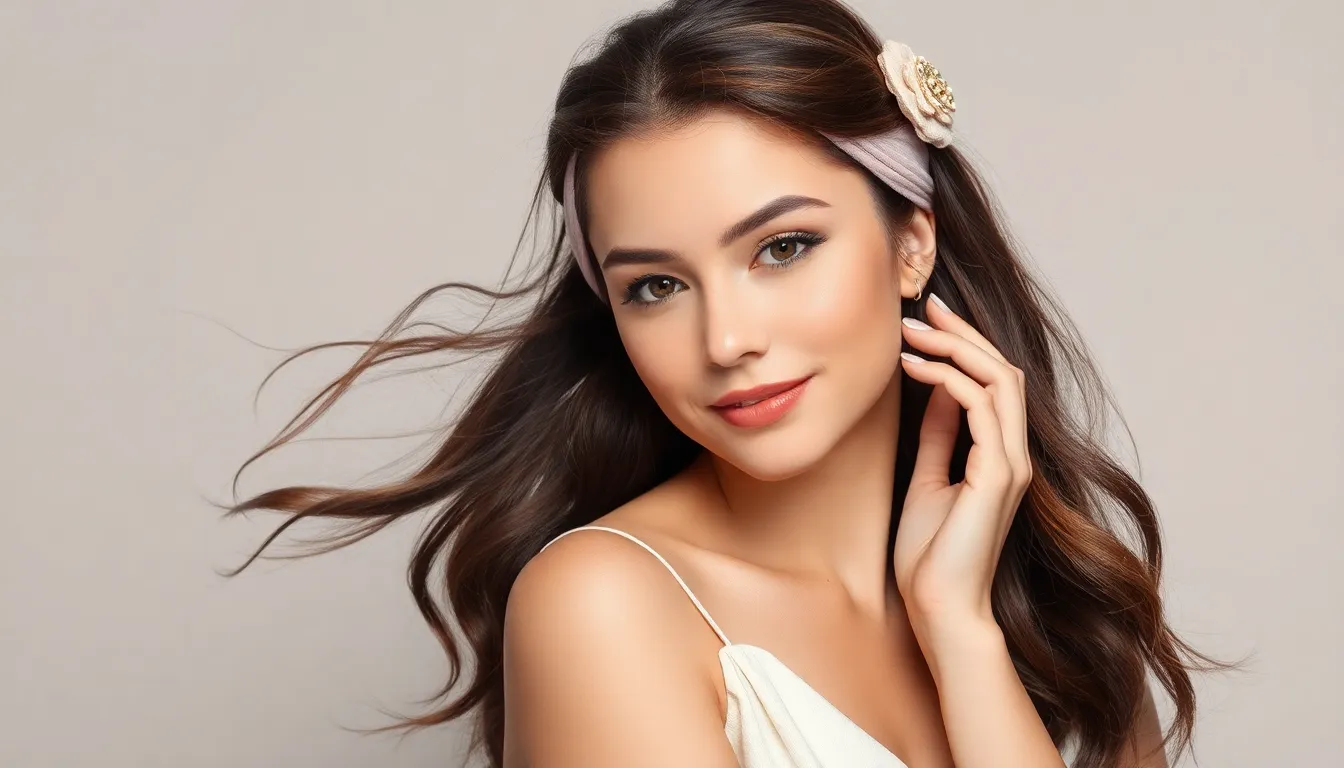
We can enhance damaged hair with strategic accessories that create the illusion of fuller, healthier locks while protecting fragile strands. These versatile additions minimize hair manipulation while delivering stylish results that complement our protective styling approach.
Headband Styles
Headbands transform damaged hair into elegant styles without requiring tight manipulation or heat tools. We recommend soft fabric headbands made from silk or cotton that won’t snag on brittle strands or create additional tension points. Positioning a wide headband across the crown creates instant volume while concealing root damage and thinning areas.
Creating retro-inspired looks becomes effortless when we push hair back with decorative headbands and allow natural texture to show through. This approach works particularly well for shoulder-length damaged hair that needs gentle handling throughout the day. We can achieve sophisticated office-ready styles by combining loose, air-dried waves with embellished headbands that draw attention upward.
Boho-chic headband styles offer another protective option where we wrap elastic or beaded bands around the hairline and let damaged ends flow freely below. These styles distribute weight evenly while keeping hair away from the face without pulling or tugging motions that could worsen breakage.
Hair Clips and Barrettes
Hair clips provide gentle securing methods that protect damaged hair from environmental stressors while creating polished appearances. We choose clips with smooth edges and soft grips to prevent snagging on weakened cuticles or breaking fragile strands during removal. Strategic placement of decorative barrettes can instantly elevate simple styles like loose side parts or gentle waves.
Statement clips work exceptionally well for damaged hair because they eliminate the need for tight ponytails or complex braiding techniques. We can secure one side of our hair back with an ornate barrette while allowing the rest to cascade naturally over the opposite shoulder. This asymmetrical approach disguises uneven lengths and damaged ends while creating visual interest.
Pearl or jeweled clips add sophistication to protective low buns without requiring additional bobby pins that might stress fragile hair. We recommend using clips with wider bases that distribute pressure across larger surface areas rather than concentrated points that could create breakage.
Decorative Hair Ties
Decorative hair ties with soft grips prevent the hair breakage commonly associated with traditional elastic bands while adding style elements to simple ponytails. We select ties made from silk, satin, or fabric-covered materials that glide smoothly against damaged hair without catching or pulling. Scrunchies remain our top choice because they distribute tension evenly around ponytails without creating pressure points.
Embellished hair ties featuring beads, ribbons, or metallic accents can transform basic low ponytails into elegant evening styles suitable for damaged hair. We position these ponytails at the nape of the neck to minimize stress on the crown area where damage often concentrates most heavily. This placement also protects ends from environmental exposure while maintaining a refined appearance.
Ribbon ties offer another gentle alternative where we can create loose bows that secure hair without elastic tension. These work particularly well for half-up styles that keep the top section controlled while allowing damaged ends to remain free and protected beneath.
Color-Correcting Cuts That Work With Damaged Strands
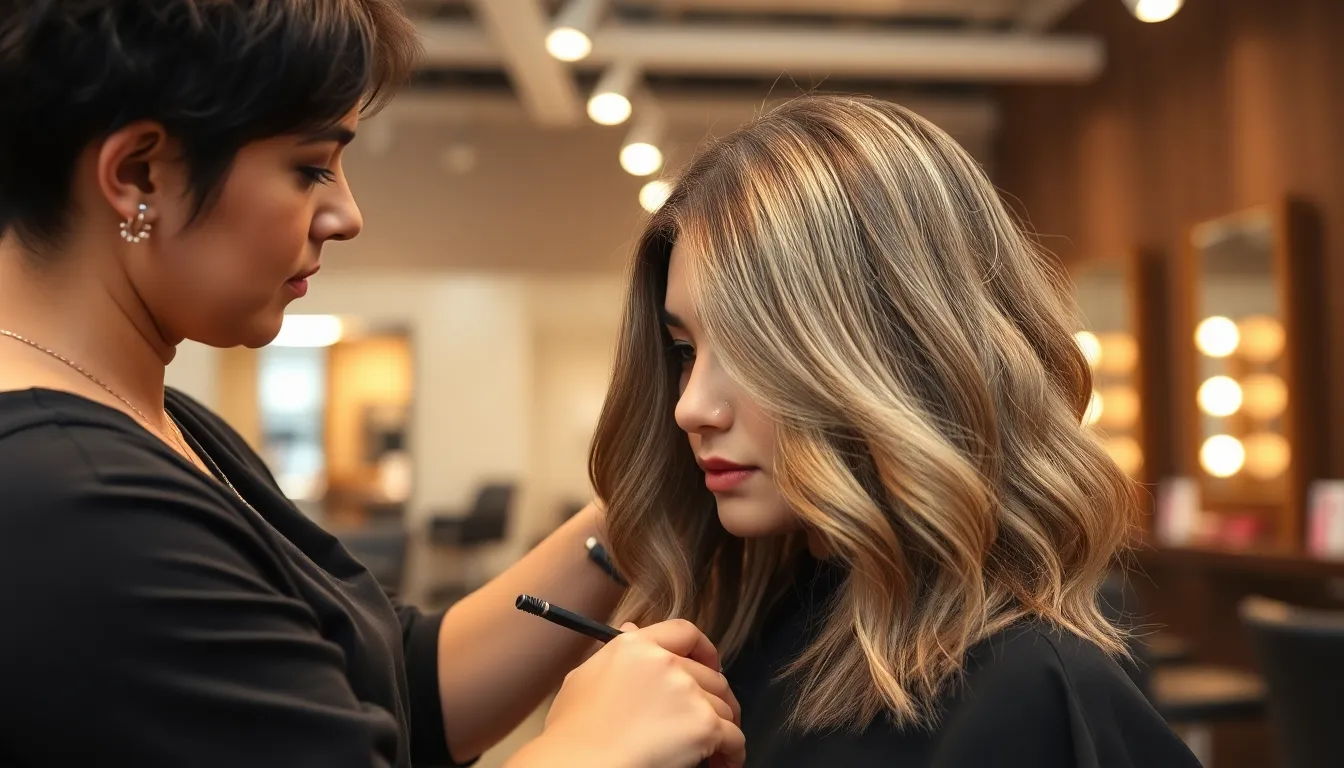
We’ll explore color correction techniques that repair damaged hair while creating stunning new looks. These methods work by strategically placing color to minimize chemical exposure and maximize visual impact.
Balayage-Friendly Lengths
Balayage works best on hair that reaches at least shoulder length, creating natural sun-kissed effects without overwhelming damaged strands. We recommend maintaining length between the shoulders and mid-back to showcase the gradient color transition effectively. The hand-painted technique allows colorists to avoid saturating already compromised areas while focusing on healthier mid-lengths and ends.
Medium to longer lengths provide the canvas needed for subtle color placement that draws attention away from damaged roots or thinning areas. We suggest consulting with colorists who specialize in balayage for damaged hair, as they can customize placement to complement your hair’s current condition. The technique requires fewer touch-ups than traditional highlights, reducing ongoing chemical exposure that could worsen existing damage.
Ombre-Compatible Styles
Ombre styles create dramatic transitions from darker roots to lighter ends, perfectly disguising damaged areas while adding visual interest. We find that ombre works exceptionally well on hair with existing breakage because the darker root area requires minimal processing. The gradual color shift helps camouflage uneven textures and split ends that often accompany damaged hair.
Longer styles from shoulder length to waist length showcase ombre effects most successfully, allowing for smooth color transitions that appear natural and intentional. We recommend starting with subtle color differences of 2-3 shades to minimize processing damage on already compromised strands. The technique concentrates lightening on the lower portions of hair, which can be trimmed more frequently to remove damaged ends while maintaining the overall color effect.
Single-Process Color Cuts
Single-process color involves applying one uniform shade throughout the entire head, making it the gentlest option for severely damaged hair. We prefer this method because it requires only one chemical application instead of multiple processes that could further compromise weakened strands. The technique covers gray roots effectively while depositing color evenly without the lifting action that causes additional damage.
Bob cuts and lobs work particularly well with single-process color because the uniform length showcases the even color distribution beautifully. We suggest choosing colors within 1-2 shades of your natural tone to minimize processing time and chemical exposure. Demi-permanent and semi-permanent options provide excellent results for damaged hair while gradually fading without harsh regrowth lines that require frequent touch-ups.
Professional Salon Styles Worth the Investment
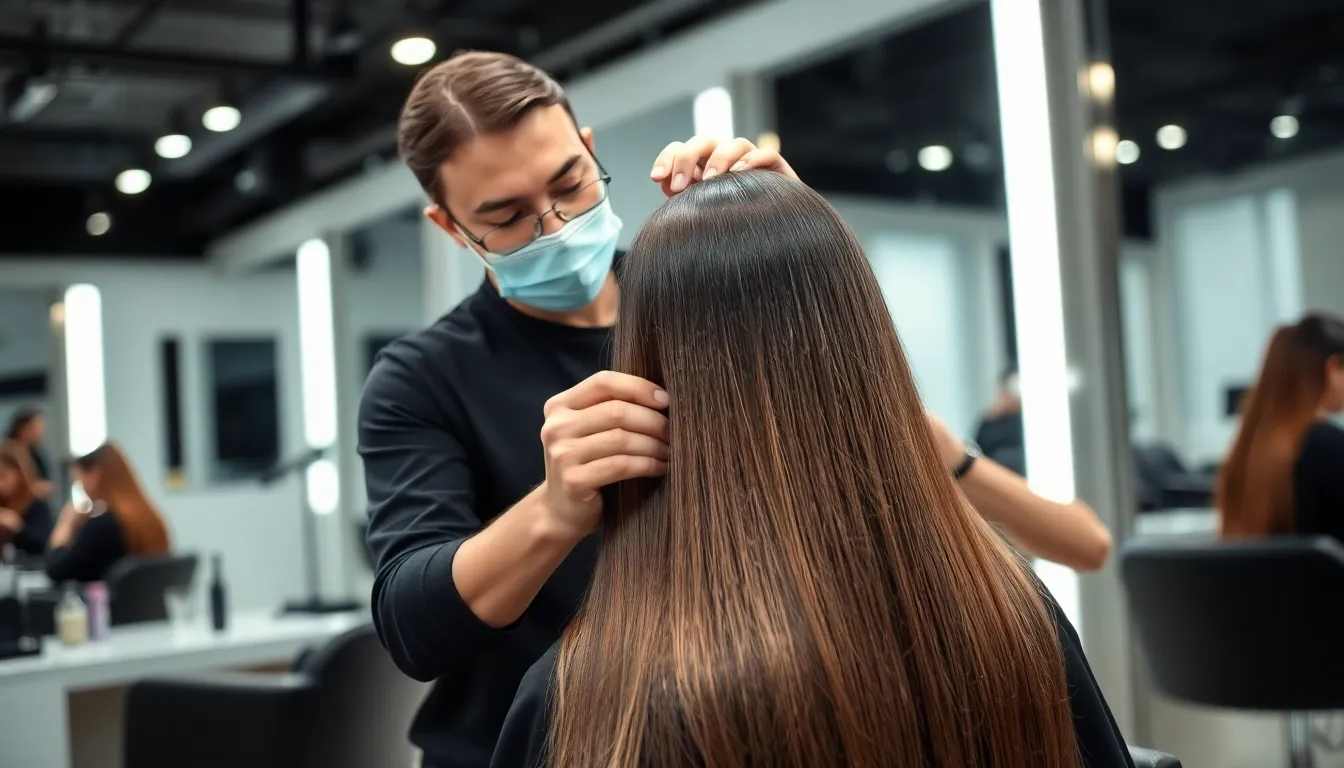
Professional salon treatments and styling techniques can transform damaged hair when paired with strategic cuts. We recommend investing in these specialized services that work synergistically with exact hairstyles to maximize hair health and appearance.
Keratin Treatment Compatible Cuts
Blunt bobs work exceptionally well with keratin treatments by maintaining clean lines that showcase the smoothing benefits. These cuts require minimal layering since the treatment already provides the sleek finish you’re seeking. Long bobs with subtle angles complement keratin’s straightening effects while reducing overall hair weight and stress on weakened strands.
Straight cut styles maximize keratin treatment results by eliminating competing textures that could work against the smoothing process. We suggest avoiding heavy layering since keratin treated hair looks most polished with uniform lengths that maintain consistent smoothness from roots to ends.
Graduated cuts with minimal texturing provide movement without compromising the treatment’s effectiveness. Professional stylists recommend these cuts because they distribute keratin benefits evenly while creating natural looking results that require less daily styling manipulation.
Deep Conditioning Treatment Styles
Long straight styles allow deep conditioning treatments to penetrate thoroughly without interference from complex cuts or excessive layering. These cuts work best when hair reaches at least shoulder length, giving treatments maximum surface area to repair damage effectively.
Loose wave cuts enhance deep conditioning benefits by following hair’s natural movement patterns while maintaining length for treatment absorption. We recommend these styles for their ability to showcase healthy shine while concealing areas that need continued repair work.
Single length styles create the ideal canvas for deep conditioning treatments by eliminating damaged ends while preserving healthy hair for maximum treatment benefits. Professional stylists often suggest these cuts because they remove compromised sections without sacrificing the hair’s ability to absorb nourishing treatments.
Damage Repairing Treatments
Keratin treatments smooth damaged cuticles while strengthening hair structure, making them ideal for severely compromised strands that need both repair and protection. These treatments work best on hair that’s at least chin length to properly distribute the smoothing benefits.
Ultimate Repair services use advanced technology to rebuild hair from the cortex outward, targeting internal damage that traditional treatments can’t reach. We’ve seen excellent results when this treatment is paired with minimal cuts that preserve length while removing only the most damaged portions.
Fusion Intense Repair treatments specifically target breakage points by strengthening molecular bonds within the hair shaft. Professional application of these treatments works most effectively on hair that’s been cut to remove split ends, allowing the repair formula to focus on preventing future damage rather than trying to fix existing breaks.
Conclusion
Caring for damaged hair doesn’t mean sacrificing style or beauty. We’ve explored countless ways to transform compromised strands into gorgeous looks that actually promote healing and recovery.
The key lies in embracing gentle techniques that work with your hair’s current condition rather than against it. From protective updos to strategic cuts and professional treatments we’ve covered options for every damage level and lifestyle.
Remember that healthy hair is always the ultimate goal. By choosing protective styles reducing heat exposure and investing in quality treatments you’re not just styling your hair – you’re nurturing it back to health.
Your damaged hair journey isn’t permanent. With patience and the right approach you’ll discover that beautiful hair is absolutely achievable at every stage of recovery.
Frequently Asked Questions
What are the best protective hairstyles for damaged hair?
Low buns, chignons, and loose braids are excellent protective styles for damaged hair. These styles minimize manipulation and shield hair from environmental stressors. Use silk scrunchies to reduce tension, and ensure braids are deliberately loose to prevent additional breakage. Twisted low buns and elegant updos help conceal split ends while distributing weight evenly across the hair.
How can silk accessories help protect damaged hair?
Silk scarf wraps create a smooth barrier that eliminates friction and maintains moisture balance in damaged hair. Use 100% mulberry silk scarves with different wrapping techniques based on your hair length and damage severity. Combining silk scarf wraps with silk pillowcases extends protection during sleep, helping damaged strands recover more effectively.
What haircuts work best for damaged hair?
Classic bobs, layered pixie cuts, and shoulder-length lobs are ideal for damaged hair. These low-maintenance cuts reduce heat dependency and daily manipulation. Bobs offer straightforward styling, pixie cuts dramatically reduce styling time, and lobs maintain length while removing compromised ends, allowing you to embrace natural textures with minimal styling stress.
Are there effective no-heat styling methods for damaged hair?
Yes, air-dry waves with scrunching, overnight braided textures, and pin curl sets are excellent no-heat options. Air-drying with scrunching enhances natural waves while preserving moisture. Overnight braiding protects hair from friction and creates gentle waves. Pin curls provide defined curls without heat damage, promoting smooth finishes and supporting hair recovery.
How can layering techniques help disguise hair damage?
Face-framing layers draw attention away from damaged ends while highlighting facial features. Graduated bob cuts distribute hair weight evenly, reducing stress on weak points. Textured shag styles add volume and embrace natural movement, disguising breakage without requiring heat styling. These techniques camouflage damage while promoting healthier hair practices.
What accessories work best for styling damaged hair?
Soft fabric headbands, hair clips, barrettes, and scrunchies are ideal for damaged hair. Headbands create elegant styles without tight manipulation, while clips and barrettes gently secure fragile strands. Scrunchies prevent breakage while adding style. These accessories enhance appearance while minimizing manipulation and supporting protective styling approaches.
Can damaged hair be colored safely?
Yes, with proper techniques. Balayage works best on shoulder-length hair to showcase gradients without overwhelming damaged strands. Ombre styles disguise damage with dramatic color transitions. Single-process color is gentlest for severely damaged hair, requiring only one chemical application. Always consult colorists who specialize in working with damaged hair for best results.
What professional treatments help repair damaged hair?
Keratin treatments work excellently with blunt bobs or long bobs, maximizing smoothing benefits. Deep conditioning treatments are most effective on long straight or loose wave cuts for thorough absorption. Damage-repairing treatments like keratin and ultimate repair services strengthen and rebuild hair structure, especially when combined with minimal cuts to remove severely damaged portions.
